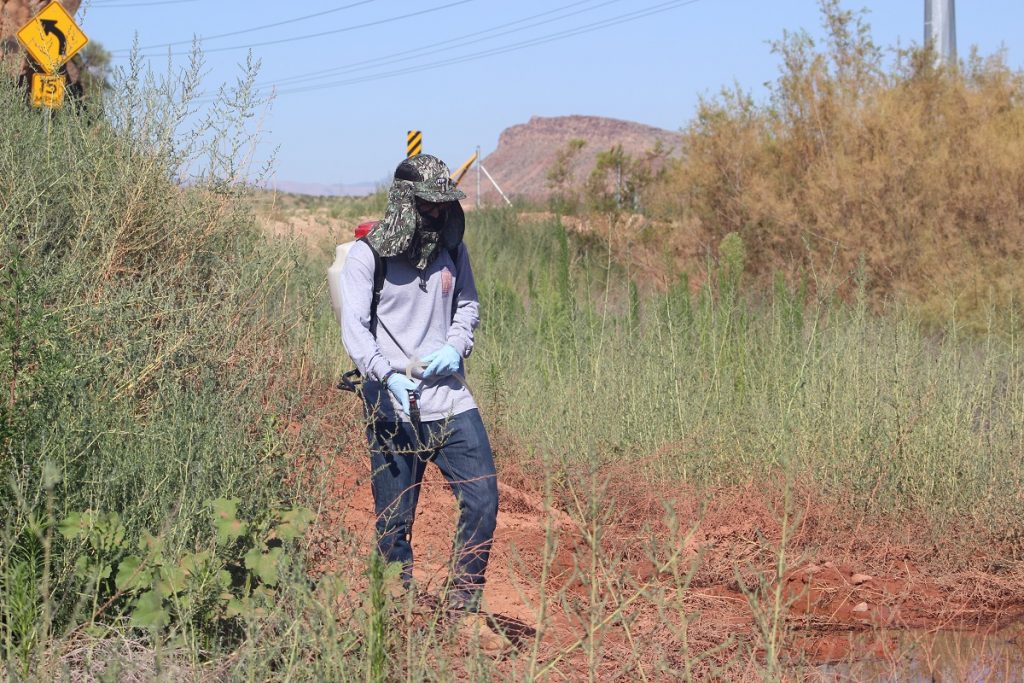
SOUTHERN UTAH — Agencies across Southern Utah and surrounding areas got an early start in the battle against an insect that remains the deadliest creature on the planet thanks to a freeze in February, while Nevada reported its first human case of West Nile virus this season.
The Southern Nevada Health District reported that a 50-year -old woman became ill with the more serious neuroinvasive form of the illness but has since recovered, according to a statement released Friday by the district.
Arizona has reported several mosquito pools that tested positive for the virus.
No other species on earth is responsible for the loss of as many human lives each year as mosquitoes are. A remarkably accomplished vector for disease, mosquitoes have found a niche in every spot on the globe except Antarctica, and kill more than 700,000 people worldwide each year, according to the World Health Organization.
Early intervention is key to keeping mosquito numbers down across the state, and the Southern Utah Mosquito Abatement and Control District in Washington County is on the case.
Since February, the agency’s technicians have been monitoring and treating a number of mosquito sites spread across the county, checking for mosquito larvae in all the places standing water is known to occur, an environment where most species of mosquitoes lay their eggs, Sean Amodt, manager of the Southwest Mosquito Abatement and Control District said.
The biggest concern for Southern Utah is the increased rain this year, which will have little effect on the numbers as long as rainfall through May and June is minimal, Amodt said.

“It’s not the snow melt that affects mosquito numbers, it’s rain that runs into the storm basins and wherever that water pools.”
Most species of mosquitoes lay eggs in standing water and each female can lay 100-200 eggs that hatch in warmer temperatures. Those populations continue to rise accordingly, reaching their peak during the hot summer months.
What was different this year, Amodt said, was a short spike in temperature in February that was immediately followed by stark drop, allowing the larvae to rise to the surface during the spike which was then treated using a biological agent that treats the surface water making it impossible for them to breathe.
“Mosquitoes hatch in warm temperatures and lay their eggs when it cools down, so we had both this year in quick succession, which worked out great.”
That fluctuation in temperature also provided teams with a two-week window of opportunity where they were able to treat all of the areas where larvae has been found in the past, he said. Warmer temperatures are what larvae need to mature, so they remain trapped and alive in the water for however long it takes for temperatures to rise, no matter how long that is.
“With larvae, it all comes down to weather and water conditions.”
The district also monitors the adult mosquito population, setting more than 40 traps across the county each week using carbon dioxide, which imitates human breath, along with a light source. Once the mosquitoes are collected, they are tested immediately for West Nile and Western equine encephalitis virus.

This information is then used to formulate a plan of attack, using either a bacteria that inhibits the larvae’s growth so they never reach maturity or the surfactant, the agent used on the water’s surface, to remove the larvae.
The agency’s efforts seem to be paying off, as there were no cases of the West Nile virus infecting a human in Southern Utah last year.
Not all areas or communities have an agency specifically designed to address a single insect population, Amodt said, adding that while many residents assume the area does not have a mosquito problem, because the lack of something isn’t as easily noticed, those working in agriculture do notice the reduced mosquito population and are not shy about telling them.
“Knowledge is power, and the district allows us to gather data specific to our area that is used to make the best decisions that protect the public from mosquito-borne diseases,” Amodt said.
The district also relies on the public to call in and report mosquito populations that exist in areas not already treated every year, and the agency makes many service calls each year, he said, adding that educating the public is also part of their efforts.
The agency also works with abatement programs across the state and into Arizona and Nevada to manage mosquito populations.
What to do around your home
Amodt does not recommend mosquito traps that use CO2. The traps attract a lot of mosquitoes but not all of them will be caught, and the remainder will bite. Here are some other tips:
- Empty or cover anything outside that can hold water.
- Filter permanent ponds regularly or put fish in them. Fish eat mosquito larvae.
- Keep pools chlorinated or drained completely.
- Clean clogged rain gutters and storm drains regularly.
- Manage irrigation water effectively.
- Store old tires inside, or cover them.
- Report other mosquito breeding sites to the district.
Arizona
The most common mosquito-borne disease in Arizona is West Nile virus, and mosquitos in areas near Pheonix have tested positive for the virus so far this year.
Surveillance and fogging operations are well underway to reduce the mosquito population throughout the region, according to Mohave County Department of Public Health officials.
For more information go to the Arizona Department of Health Services.
Nevada
The Southern Nevada Health District’s Mosquito Surveillance Program regularly tests mosquito pools for West Nile, St. Louis encephalitis, and Western equine encephalitis. So far this season there have been no reports of mosquito pools testing positive.
In Clark County, 174 traps have been set and 496 mosquitoes submitted to the Southern Nevada Public Health Laboratory for analysis.
For more information and prevention tips go to the CDC’s Prevent Mosquito Bites webpage.
Email: [email protected]
Twitter: @STGnews
Copyright St. George News, SaintGeorgeUtah.com LLC, 2019, all rights reserved.